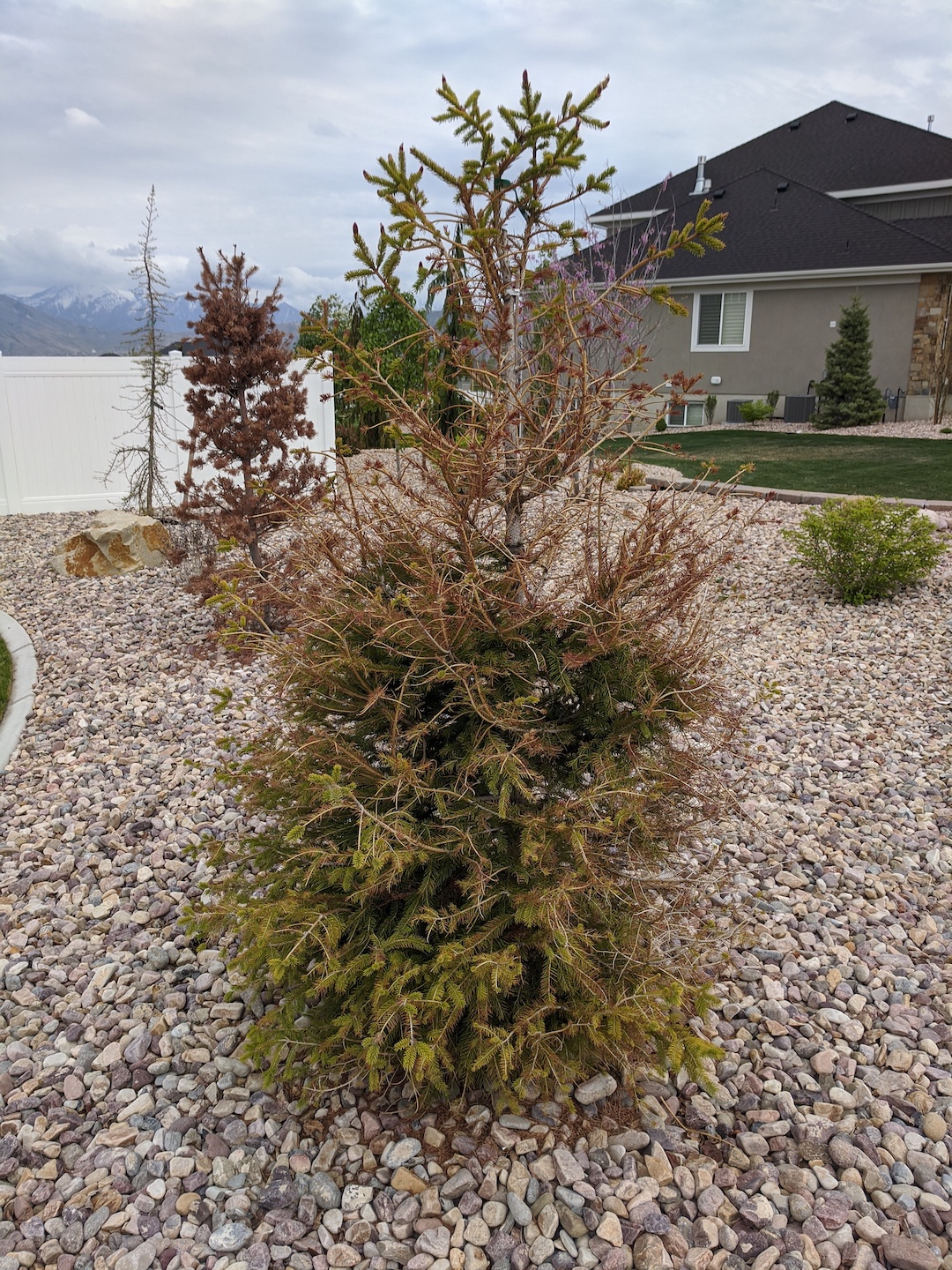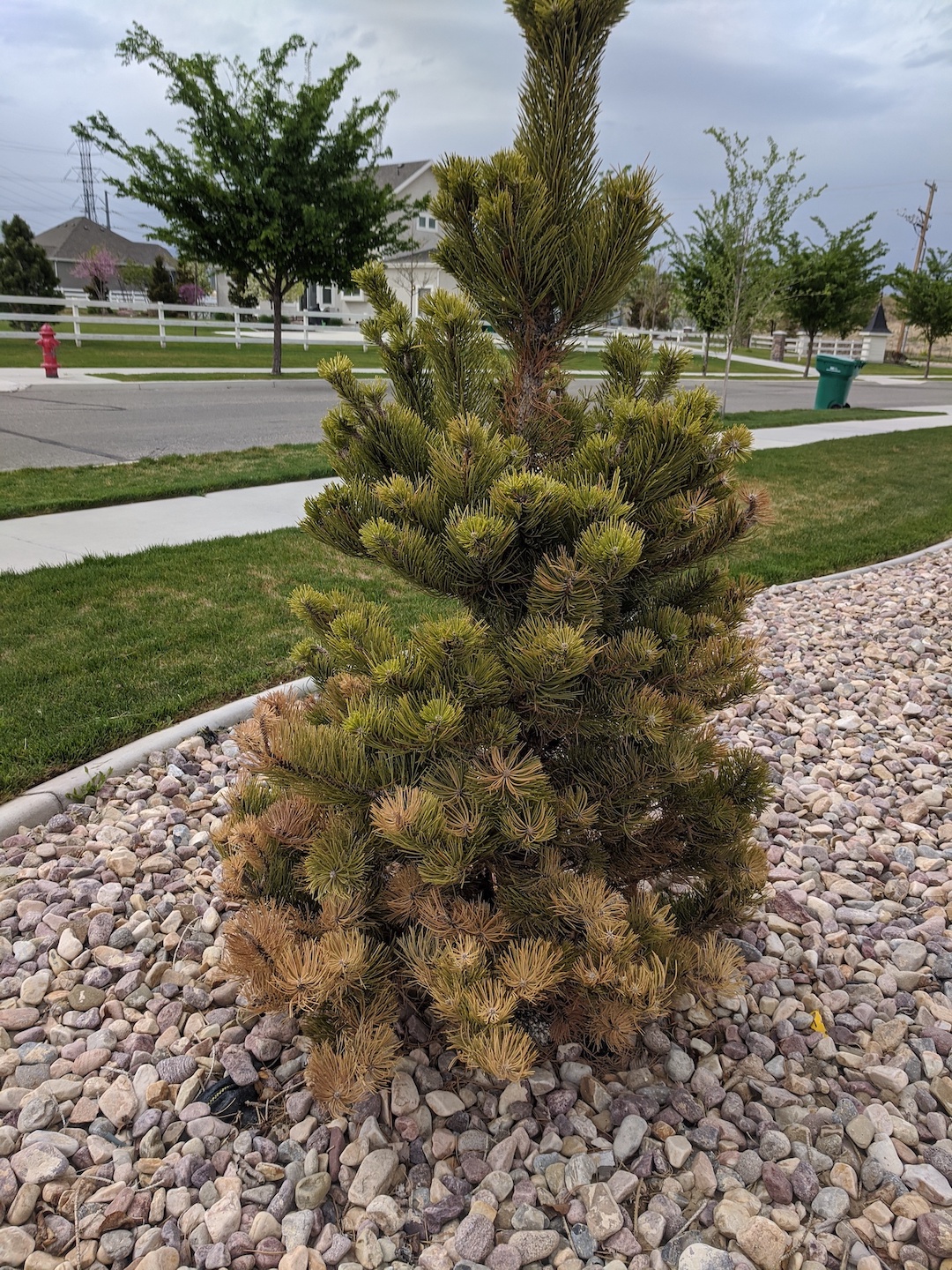Ask an Expert
Question from Katie, Bluffdale, UT (received 5/14/20) -
We live in Bluffdale where our soil is very dense clay. We are having trouble with most of our different types of pine trees. We have had several die on us already and we are worried about the ones we still have. They are just turning brown and loosing their needles. Is there anything we can do to help them? Most of the year we use secondary water through a drip system to water them. Thanks for your time and help!


Answer from Dr. Mike Kuhns, USU Extension Forester and Professor (sent 5/14/20) -
Katie,
As soon as you said drip system I knew what at least part of the problem probably was – lack of water. It is very difficult to irrigate trees enough with drip irrigation systems. Large trees, and small trees that will eventually get large, need or will need, a lot of water. A blue or Norway spruce as it gets large eventually will require at least 150 to 200 gallons of water a day. And some tree species are more likely to get attacked and weakened or killed by insects (like bark beetles in spruces) or diseases (like stem canker fungi in cottonwoods and willows) if they are water stressed.
There also could be a related problem – accumulating salt from the secondary water system. I have looked at sick trees in the Bluffdale area before and they had salt accumulating in the soil because the irrigation water in that area has salty water. I think that I was told that salt is a problem if you get irrigation water out of that end of Utah Lake. Salt is not good but when you are irrigating small amounts and not very often the salt will accumulate because you never put on enough water all at once to flush the accumulated salt out of the soil.
Here is a recent description I wrote in an email for someone else about how to water trees:
For any tree it is best to water long enough to get water at least 12” deep, often enough to keep the soil moist between waterings, and over an area broad enough to moisten about 60 cubic feet of soil volume per inch of trunk diameter that your tree should have. The way you do this is to experiment with amounts of water and timing and then see how deep the water goes given that amount and timing using a probe. A probe can be a long screwdriver or a steel rod with a T-handle at least 12” long. You push it into the soil and it readily penetrates moist soil but not dry soil.
Also Deodar cedar, which was one of your selections, is on the edge of being cold hardy in the SLC area. It has a USDA Hardiness rating of 7 to 9 and the SL Valley varies from zone 6 to 7 (see hardiness info). However, I have seen enough Deodar cedars doing OK in the valley that I doubt that that is the problem.
I recommend that you have an arborist come by and look at your trees and advise you. A soil and irrigation water salt test would also be good. If you can switch to culinary water occasionally or always that would be better for your entire landscape. At least a few times a season putting on extra water (culinary water if possible) will remove accumulated salt. Also you should look at the fact sheets on planting and other subjects on our website.

